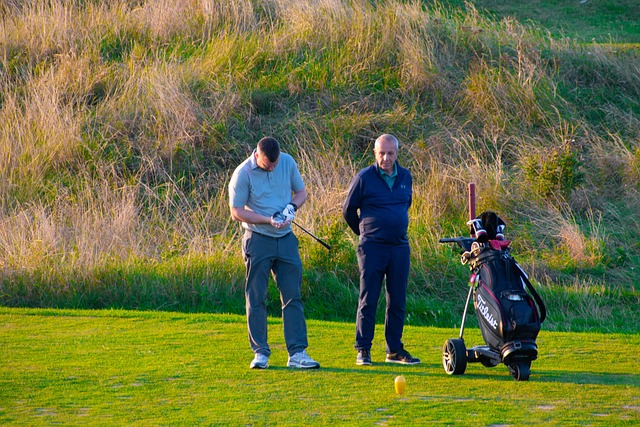
Left Handed Golf: The Techniques Pros Don't Want You to Know
Introduction
Playing golf as a lefty can sometimes feel like navigating an uphill course. Not only are there fewer equipment options and training resources, but many techniques seem tailored for right-handers. If you’re a left-handed golfer ready to elevate your game, this guide is for you. From adjusting your swing to mastering lefty-specific strategies, you’ll find tips here that can give you an edge on the course.
Table of Contents
- Common Challenges Left-Handed Golfers Face
- Essential Equipment Adjustments
- Swing Techniques Tailored for Lefties
- Breaking Down the Secrets of Left-Handed Putting
- Advanced Strategies for Left-Handed Golfers
- Tips for Outplaying Right-Handed Opponents
- Summary: Mastering the Left-Handed Game
1. Common Challenges Left-Handed Golfers Face
Lefties know that the world isn’t always built for them, and golf is no exception. Equipment is often limited, and a lot of advice assumes a right-handed setup. This can make it difficult to progress without feeling like you’re adapting everything just to keep up. Fortunately, left-handed golfing can be rewarding once you know how to overcome these unique challenges.
2. Essential Equipment Adjustments
The right equipment is key for any golfer, but for lefties, it’s essential. Left-handed clubs aren’t just a flipped version of right-handed ones; they’re engineered to help you build a more natural stance, improve grip, and hit with confidence. Here’s what to look for:
- Custom Fitting: Many brands offer custom fitting for left-handers, which helps you get clubs that work with your swing, not against it.
- Brand Options: Look for brands like Callaway and Titleist that offer a wide range of left-handed clubs. If you can, try out different clubs to see what feels right.
- The Right Bag: Organizing your bag may seem minor, but having clubs easily accessible in left-handed order will make your game flow more naturally.
3. Swing Techniques Tailored for Lefties
A well-tuned swing is the core of every golfer’s game. For lefties, this can mean flipping the script on common advice:
- Stance and Alignment: Right-handed techniques often focus on starting stances and weight distribution that don’t always translate for lefties. Instead, focus on getting comfortable with a left-first stance, which allows your swing to be as fluid as possible.
- Swing Path: Visualize your swing as a natural arc from left to right. Keeping your lead shoulder steady while swinging helps maintain a smooth follow-through.
- Try Drills: Practicing mirror drills can help you see where you need adjustments. Try standing in front of a mirror, focusing on your left shoulder and how your hips rotate. This keeps your swing tight and aligned.
4. Breaking Down the Secrets of Left-Handed Putting
Putting is all about precision and feel, and left-handers can develop some unique techniques to gain an edge:
- Reading Greens: Many golfers have learned to read greens from a right-handed perspective, which can be disorienting for lefties. Practice reading greens in a way that feels natural to you; this could mean shifting your stance slightly to get a fresh look.
- Positioning: Experiment with foot placement. Lefties sometimes find they’re more consistent by setting their stance slightly more open or closed to align their shoulders better.
- Developing Touch: Putting is about touch, so practice smooth, consistent strokes rather than forcing it. Visualize the putt from your own perspective—this builds confidence over time.
5. Advanced Strategies for Left-Handed Golfers
To take things up a notch, here are a few advanced strategies designed with left-handers in mind:
- Course Management: When planning your shots, visualize where your ball would ideally land as a left-handed player. Many holes are designed with right-handers in mind, so think about approaches and where a lefty might have a natural advantage.
- Handling Hazards: Obstacles can look different to lefties, and what might feel like a disadvantage can be flipped to work in your favor. Bunkers, water hazards, and trees can be easier to avoid if you approach them from a left-handed angle.
- Mental Game: Confidence is everything, and left-handed players often need a bit more to feel like they belong. Trust your skills and focus on what works best for you rather than trying to mirror right-handed advice.
6. Tips for Outplaying Right-Handed Opponents
Playing against right-handed golfers can give you some subtle advantages. Here’s how to make the most of them:
- Use Your Perspective: You’ll naturally see the course differently, which can work to your benefit. Study holes from a left-handed point of view and notice angles that your opponents might overlook.
- Adjust Timing: Many right-handed players are used to seeing other righties. Small changes in timing—whether in setup or swing—can add an element of surprise that puts opponents off balance.
- Leverage Unexpected Shots: Lefties often develop skills in awkward situations, which can make for impressive saves that your opponent might not be able to match.
Summary: Mastering the Left-Handed Game
Being a left-handed golfer means playing with a unique perspective that you can turn into a powerful advantage. By using the right equipment, perfecting your swing, and adopting tactics specifically for lefties, you can build a game that feels natural, confident, and effective.
FAQ
What are the best clubs for left-handed golfers?
Look for clubs that offer custom fitting for lefties, like those from Callaway and Titleist. Trying out a few models can help you find what feels best.
How can left-handed golfers practice swing drills at home?
Try mirror drills to check your shoulder and hip alignment. You can also work on grip and positioning with basic weight transfer exercises.
Do left-handed golfers have any inherent advantages?
Absolutely! A left-handed perspective on the course offers different angles that can work in your favor.
What’s the difference between left- and right-handed golf clubs?
Left-handed clubs aren’t just flipped versions of right-handed ones—they’re designed to accommodate a left-handed grip, stance, and swing dynamics.